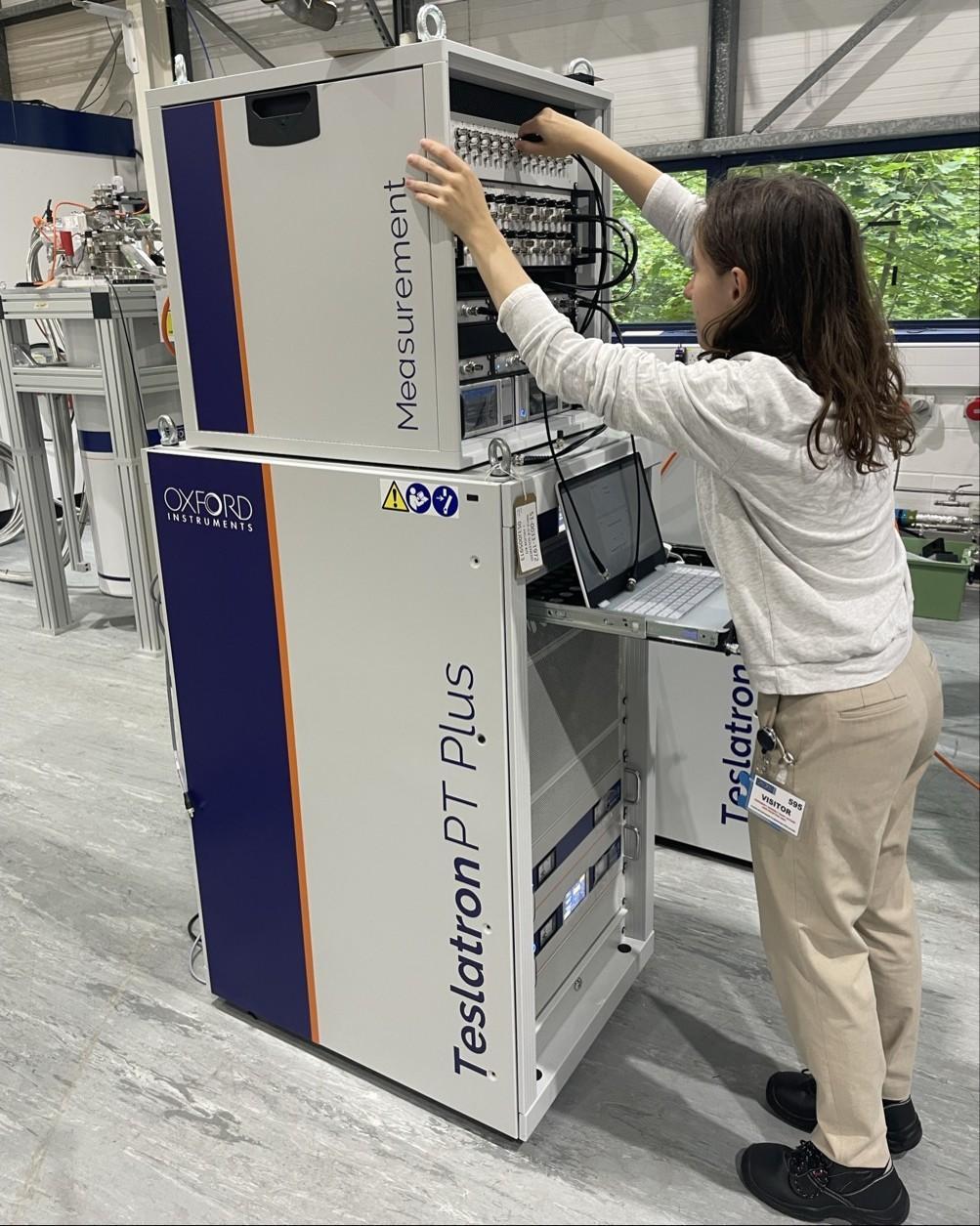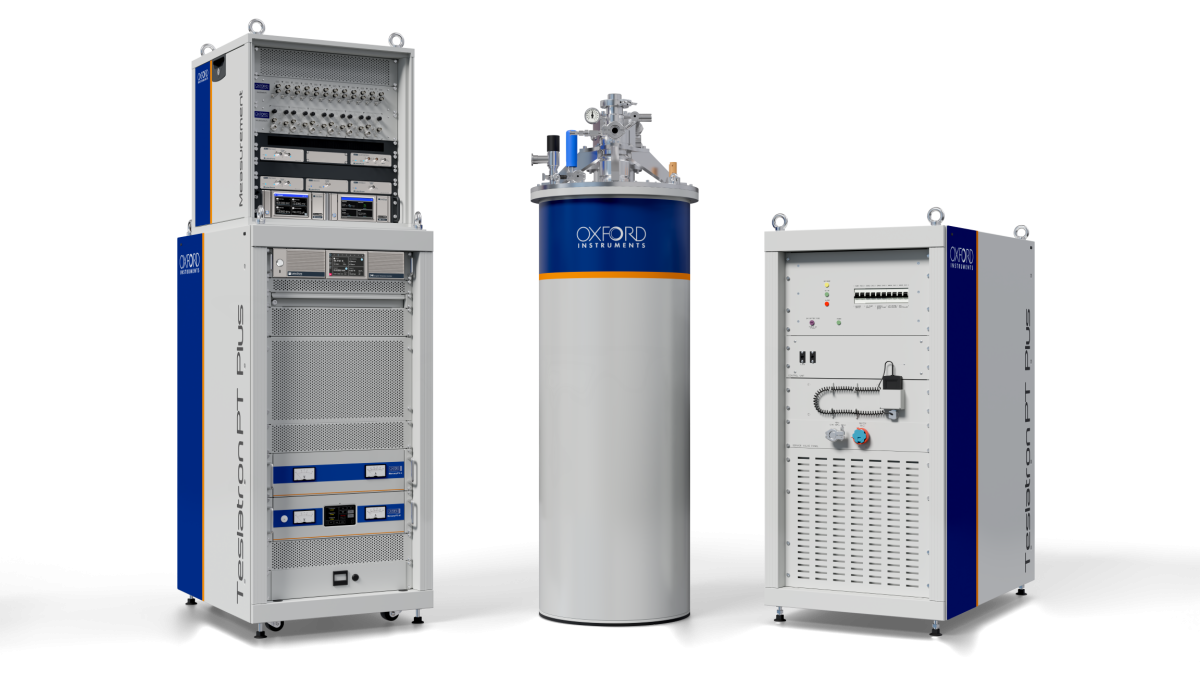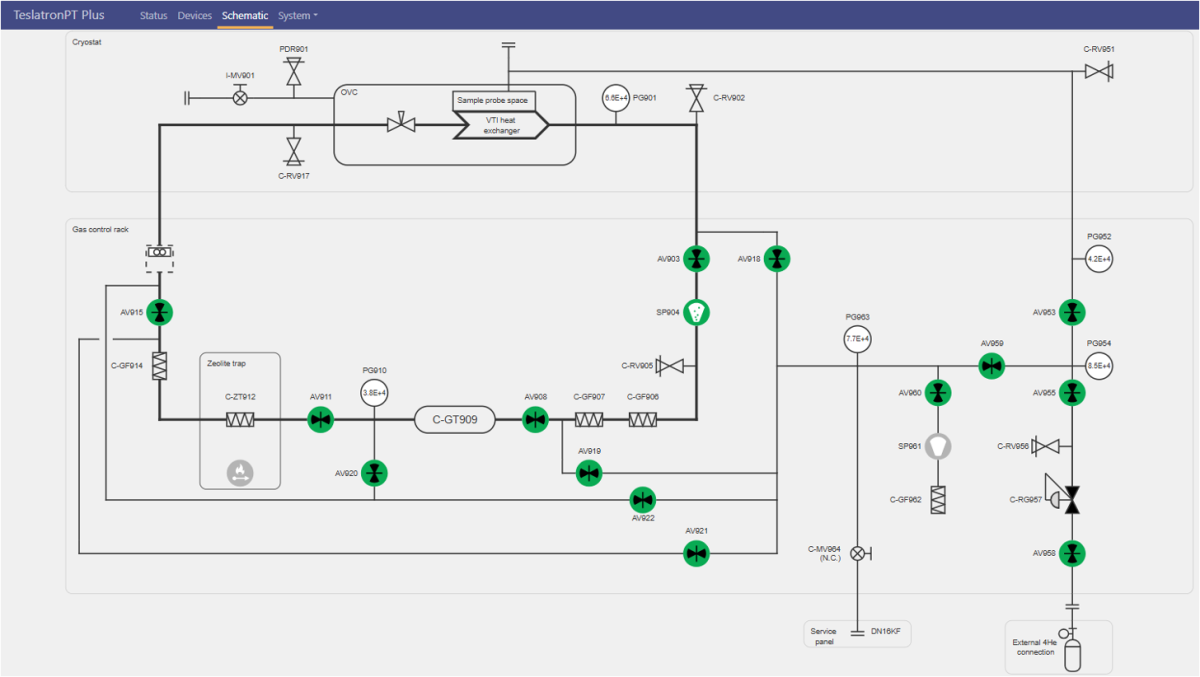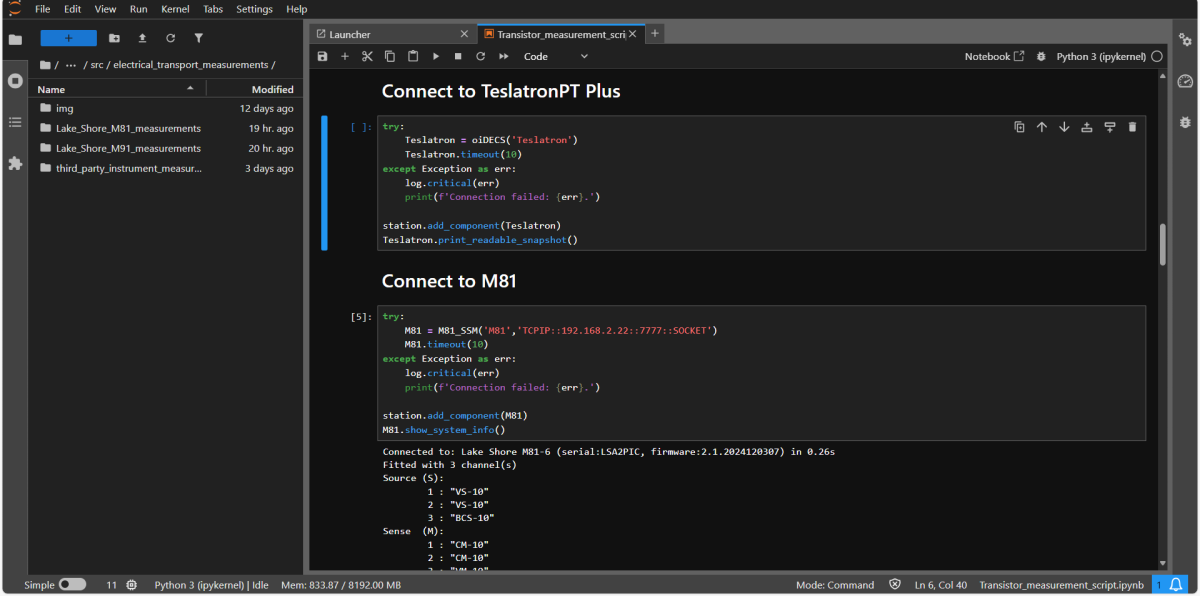Applications
 Part of the Oxford Instruments Group
Part of the Oxford Instruments Group
Expand
Collapse
Ioana Paulescu is a second-year PhD student at the University of Oxford, whose research is funded via an EPSRC iCASE award in the Quantum Matter in High Magnetic Fields group in the Department of Physics, led by Professor Amalia Coldea. Ioana’s research focuses on understanding the electronic behaviour of iron-chalcogenide superconductors and their phase diagrams probed in high magnetic fields.
Recently, Ioana visited Oxford Instruments Nanoscience’s Tubney Woods site in the UK for two weeks to run an extended experimental campaign and test our new open-architecture low temperature measurement system, the TeslatronPT Plus. We caught up with her to discuss what measurement challenges she typically faces, and to find out more about her experience using the TeslatronPT Plus.

“Our research group often works to integrate new measurement techniques into the lab workflow. However, incorporating more sophisticated equipment can be challenging, especially when devices come with their own, highly specific software. While many companies aim to deliver instruments capable of running entire experiments independently, in most real-world settings – unless you're building a lab from scratch – it's far more practical to have equipment that's easy to integrate with existing systems.
Remote control of experiments is important for us, as typically, a lot of people need access to the magnet when the system is running. Remote access is necessary to make the best use of overnight time, to check the status of the system and to set up new measurements.”
“As a user with prior experience running low-temperature, low-frequency AC resistivity measurements in high magnetic fields, I found the TeslatronPT Plus quite intuitive. With a dry magnet, there is no pressure to be time-efficient or conserve helium during the different sweeps, which allowed me to focus on the scientific aspects.
Beyond its reliability, the TeslatronPT Plus’s greatest advantage in terms of operability is the integration of all components into a single Python script.
Being able to control not only the measurement instrumentation, but also the magnet and gas handling system (pumps, valves, etc.) from the same script is quite unique. It gives experienced users the flexibility to make improvements and provides beginners with insight into how everything works. The coding load is lightened by a few GUI features included in the standard example scripts.”

“For transport measurements, samples can be mounted on standard LCC chips, which slot easily into the Universal Measurement Probes’ sample holders. The probe setup was straightforward, and having a map of all available connections proved helpful in avoiding using pins already assigned to other functions.
Connecting to the measurement hardware was simple. Everything - from the breakout boxes to the measurement instrument (in this case, the Lake Shore M81 for magnetoresistance measurements) – is housed in a single integrated measurement rack. The compact design saved a lot of setup time by eliminating complex wiring and compatibility concerns. Having everything preconfigured and centrally managed meant I could control the experiments later from the measurement software, which made both operation and troubleshooting much more efficient and stress-free.
Once the probe was inserted, the pumping and flushing process was smoothly controlled via the integrated software, which displayed a schematic of the gas handling system. This allowed us to visualise the detailed valve operation (including pulsed control if needed), and pressure gauges were accompanied by time-resolved plots, making the whole process easy to follow and intuitive.”

“The measurement software is provided as a collection of Jupyter Notebooks, which include a set of existing measurement scripts that guide you through the entire process, from connecting to various instruments, to setting up data and metadata logging in a database, and even plotting results in Grafana.
Currently, running measurements involves playing with basic script building blocks to create a sequence tailored to your specific needs. The Python coding proficiency required to modify the existing code is fairly low. Although I primarily use MATLAB for data analysis, I was able to quickly get comfortable with the software.
Many standard transport measurements are well-optimised. The open architecture and transparent codebase made it possible to fine-tune different system parameters for a suitable configuration that allowed the system to perform the tasks required for our measurements.”

“As a frequent user of measurement systems, I have a solid basis for comparison. What excites me about the TeslatronPT Plus is the greater flexibility it creates due to the large number of available electrical connections, which are well-suited for a large range of experimental needs. In particular, using different contact configurations is possible, and they are easily adjustable when they break.
In addition, the open Python-based programs will enable scientists to customise their transport measurements. An important advantage, since no instrument can perfectly meet every research need or integrate seamlessly with all lab-specific software environments. Given this setup, a system like the TeslatronPT Plus can be integrated naturally into existing infrastructures.”
Contact us to learn more about how TeslatronPT Plus can benefit your research